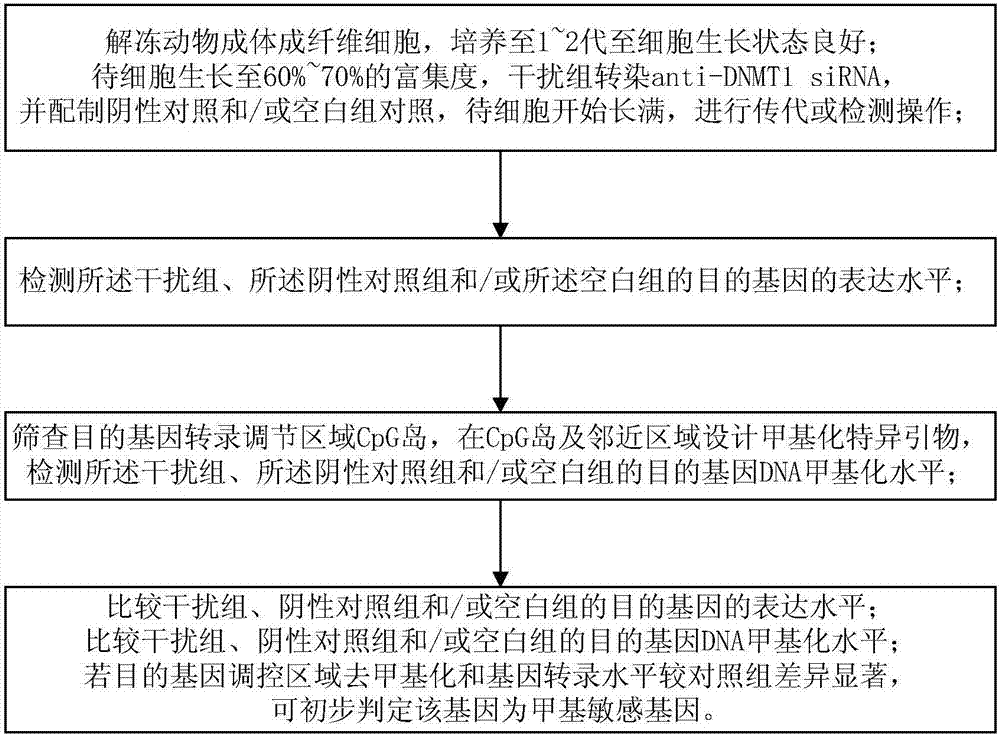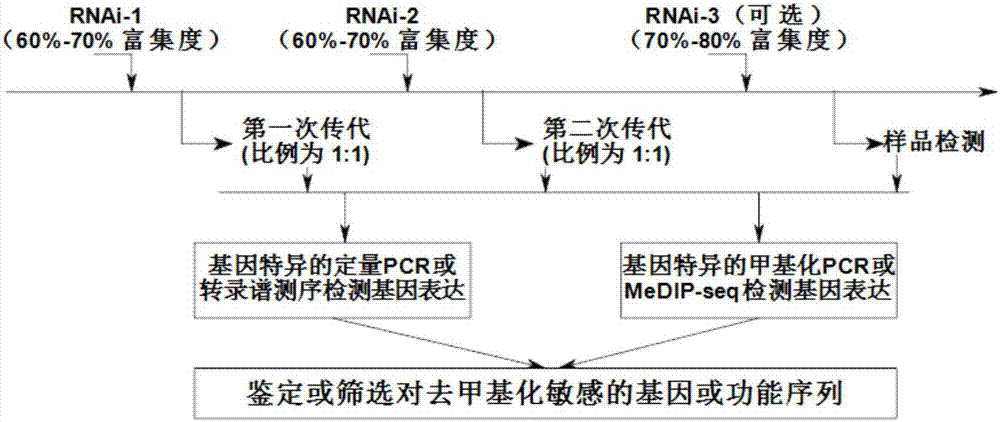Method for screening methylation sensitive gene of DNA
A methylation and gene technology, applied in the field of genetic engineering, can solve the problems of lack of stem cells, lack of disease models, and high experimental technical requirements, and achieve the effect of easy operation and easy acquisition.
- Summary
- Abstract
- Description
- Claims
- Application Information
AI Technical Summary
Problems solved by technology
Method used
Image
Examples
Embodiment Construction
[0020] Below in conjunction with accompanying drawing and embodiment the present invention will be further described:
[0021] Such as Figure 1-4 As shown, in the first embodiment of the present invention, a method for screening DNA methylation-sensitive genes is provided, the method comprising the following steps:
[0022] Construction steps of hypomethylated cell model: thaw animal adult fibroblasts, culture to 1-2 passages until the cells grow well, wait for the cells to grow to 60%-70% enrichment, and transfect the interference group with anti-DNMT1siRNA , and prepare a negative control and / or a blank control group, and perform passage or detection operations when the cells begin to overgrow;
[0023] The detection step of gene expression change: detecting the expression level of the target gene in the interference group, the negative control group and / or the blank group;
[0024] The detection steps of gene-specific region methylation: screen the CpG island of the targ...
PUM
 Login to View More
Login to View More Abstract
Description
Claims
Application Information
 Login to View More
Login to View More - R&D
- Intellectual Property
- Life Sciences
- Materials
- Tech Scout
- Unparalleled Data Quality
- Higher Quality Content
- 60% Fewer Hallucinations
Browse by: Latest US Patents, China's latest patents, Technical Efficacy Thesaurus, Application Domain, Technology Topic, Popular Technical Reports.
© 2025 PatSnap. All rights reserved.Legal|Privacy policy|Modern Slavery Act Transparency Statement|Sitemap|About US| Contact US: help@patsnap.com



